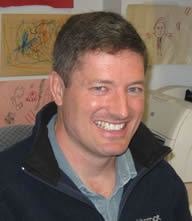Events
Singlet fission in tetracene and rubrene: evidence for the direct formation of entangled triplet pairs
March 6, 2012 at 3pm/36-428
Christopher Bardeen
Department of Chemistry, University of California, Riverside

Abstract:
Singlet fission is a process where an initially created singlet exciton spontaneously splits into a pair of triplet excitons. This spin-allowed process can be very rapid and is of interest as a way to make higher efficiency solar cells, but the mechanism has yet to be fully elucidated. We use time-resolved experiments on molecular solids known to exhibit singlet fission, namely tetracene and rubrene, to determine the effects of coherence, sample morphology, temperature, and magnetic field on this process. For both polycrystalline tetracene thin films and single crystals, quantum beats in the delayed fluorescence signal, which arises from the recombination of triplet excitons, provides a window onto the dynamics of the triplet pairs created by singlet fission. Using a density matrix model, we find that coherent superpositions of triplet pair states are created by direct transitions from the singlet state and survive on the order of 10-20 ns. Analysis of the Fourier amplitudes and frequencies of the quantum beats allows us to place limits on the distance between triplets. Our results are consistent with the so-called direct mechanism for singlet fission
Bio:
Prof. Christopher Bardeen received his B.S. in Chemistry from Yale University in 1989, and a Ph. D. in Chemistry from U. C. Berkeley in 1995. After a post-doc with Kent Wilson at U. C. San Diego, he became a professor at U. Illinois, Urbana-Champaign and moved to U. C. Riverside in 2005. His research interests include the study of exciton dynamics in organic photovoltaic materials, as well as well as the use of photoreactive molecular crystals as mechanical actuators.






